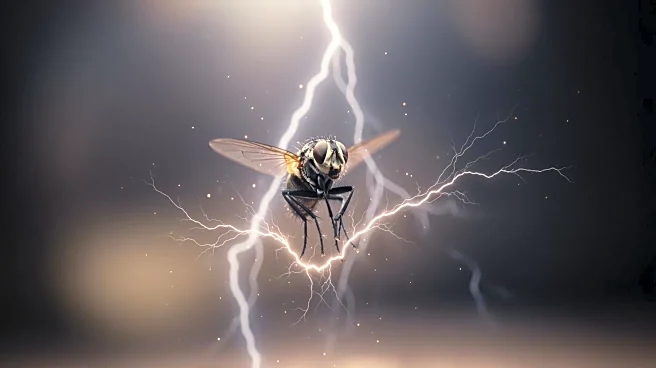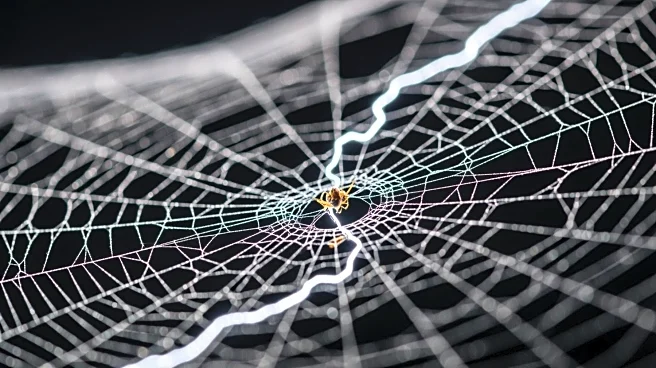What's Happening?
Researchers have uncovered a novel strategy employed by parasitic roundworms, known as nematodes, to latch onto fruit flies using static electricity. These tiny parasites, measuring about half a millimeter,
live in soil and rely on jumping to attach to their hosts for survival. The study, published in the Proceedings of the National Academy of Sciences, highlights the crucial role of electrostatic forces in aiding these worms to reach their prey. The findings reveal that nematodes can jump up to 25 times their body length, and failure to attach can lead to predation or starvation.
Why It's Important?
This discovery adds to the understanding of how small organisms utilize physical phenomena for survival, showcasing the embedded nature of physical strategies in evolution. The ability of nematodes to use static electricity for jumping onto hosts could have implications for pest control and ecological studies. Understanding these mechanisms may lead to new approaches in managing parasitic infestations, potentially benefiting agriculture and ecosystems by reducing the impact of these parasites on crops and native species.











